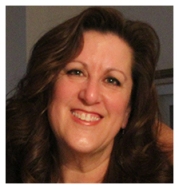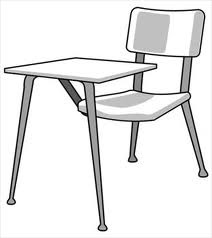Debi Mishael
קבע וכונה
 We’ve just concluded the busy month of Tishrei תשרי and for many of us, the Religious School year has finally started in full swing. With an October start of classes, I found that I had more time to reflect about the year ahead and the students with whom I would experience it. I’ve been teaching for over 35 years and I like to think that my classes are creative and engaging. I like to think that my interactive and “camp-like” lesson plans are fun and educational and that they stimulate the participants to love Judaism the way I do. I like to think that my classes meet the needs of my students.
We’ve just concluded the busy month of Tishrei תשרי and for many of us, the Religious School year has finally started in full swing. With an October start of classes, I found that I had more time to reflect about the year ahead and the students with whom I would experience it. I’ve been teaching for over 35 years and I like to think that my classes are creative and engaging. I like to think that my interactive and “camp-like” lesson plans are fun and educational and that they stimulate the participants to love Judaism the way I do. I like to think that my classes meet the needs of my students.
I have a key-chain that I received at an Introduction to Mussar teachings. On one side it said, “The whole world was created for me.” The other side said, “I am but dust and ashes.” The concept is this: when you are feeling low and deflated, you should remember that the entire world was created for your benefit. Your emotional well-being cannot help but go up after hearing that. If, on the other hand, you are in a particularly boastful mind space, it would be time to read the flip side if the keychain. This would bring you back to center, which, as I understand it, is the goal of Mussar traditions.
So, at the start of the year, I recall a lesson I taught many years ago that works for me like the Mussar keychain. It brings be back to a balance as an educator. The lesson I had intended to teach was far less important than the lesson I learned.
 My goal was to expose the students to the concept of Keva קבע & Kavanah כונה, the fixed element of communal prayer and the spiritual or intentionality of prayer. I set up two classrooms for the lesson. In the first room, the Keva קבע Room, the chairs were neatly and precisely arranged in rows. (My room is more likely to be set with chairs in a circle or grouped than it is to be in orderly rows.) The students were instructed to line up alphabetically outside the room, enter quietly and sit in assigned seats. We proceeded to have a 15 minute lesson using the V’ahavta ואהבת prayer. Students were required to raise their hands to comment and a strict decorum of rules was followed.
My goal was to expose the students to the concept of Keva קבע & Kavanah כונה, the fixed element of communal prayer and the spiritual or intentionality of prayer. I set up two classrooms for the lesson. In the first room, the Keva קבע Room, the chairs were neatly and precisely arranged in rows. (My room is more likely to be set with chairs in a circle or grouped than it is to be in orderly rows.) The students were instructed to line up alphabetically outside the room, enter quietly and sit in assigned seats. We proceeded to have a 15 minute lesson using the V’ahavta ואהבת prayer. Students were required to raise their hands to comment and a strict decorum of rules was followed.
Next, I transitioned the students to enter the second room, the Kavanah כונה Room. They were told that they could take off their shoes if they desired. They could sit anywhere in the room that was comfortable to them. Indeed, as they entered they saw beanbags where chairs once were and carpets and pillows. The lights were low and there were even a few lava lamps adorning my desk. We again, held a 15 minute lesson with the V’ahavta ואהבת as our source of inspiration.
This lesson, I thought, was a little gimmicky but creative and memorable. I thought it would provide a long lasting impression to help students understand the two important aspects of prayer. I was not expecting to be the one to learn a lifelong lesson that day.
 I started to notice that one of my students who often has great difficulty focusing and behaving appropriately was remarkably attentive and participatory in the Keva קבע Room. In fact, I had never seen him so engaged in the lesson. However, his success quickly fell apart as we spent time in the Kavanah בונה Room. And then it hit me. I prided myself on being a funky, cool, California educator. My students were lucky to have an educator like me as their teacher. I was so excited to finally get to the Kavanah room where I just knew that the magic of the lesson would transpire. What I didn’t expect to see was how well the whole class responded to the Keva קבע Room. They thrived in the structure of the Keva Room in the same way I thrived with the Kavanah כונה elements.
I started to notice that one of my students who often has great difficulty focusing and behaving appropriately was remarkably attentive and participatory in the Keva קבע Room. In fact, I had never seen him so engaged in the lesson. However, his success quickly fell apart as we spent time in the Kavanah בונה Room. And then it hit me. I prided myself on being a funky, cool, California educator. My students were lucky to have an educator like me as their teacher. I was so excited to finally get to the Kavanah room where I just knew that the magic of the lesson would transpire. What I didn’t expect to see was how well the whole class responded to the Keva קבע Room. They thrived in the structure of the Keva Room in the same way I thrived with the Kavanah כונה elements.
In the twenty years since I first taught that lesson, I have never forgotten to balance my needs as a teacher with the needs of the students. I try every year to respect that there are different learning styles. I knew that, but that day I really learned it.
Remembering this story at the beginning of each new year is my Mussar keychain. It reminds me to make sure my lessons met my needs as an educator without ignoring the needs of my students. The balance is where the magic really happens.

